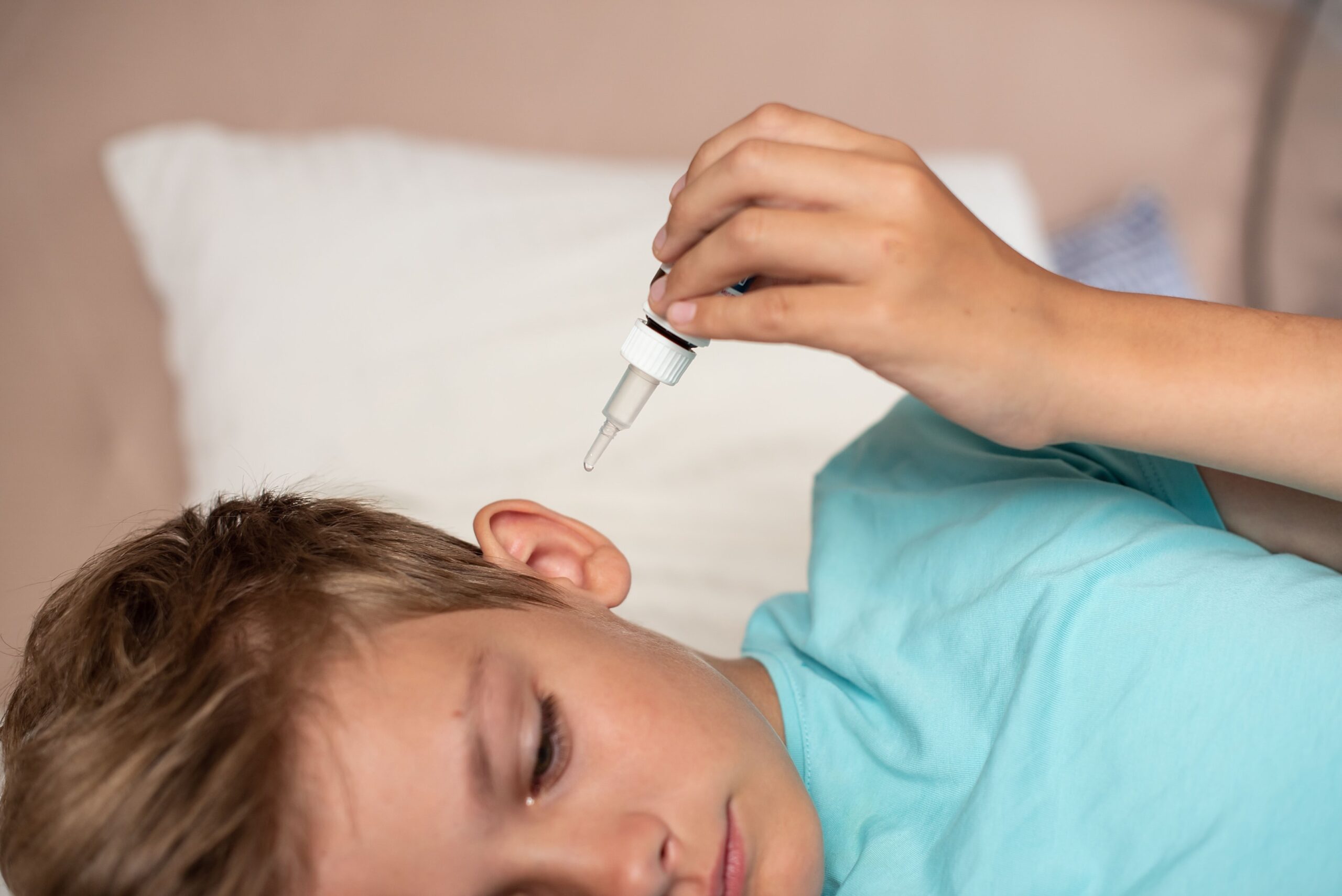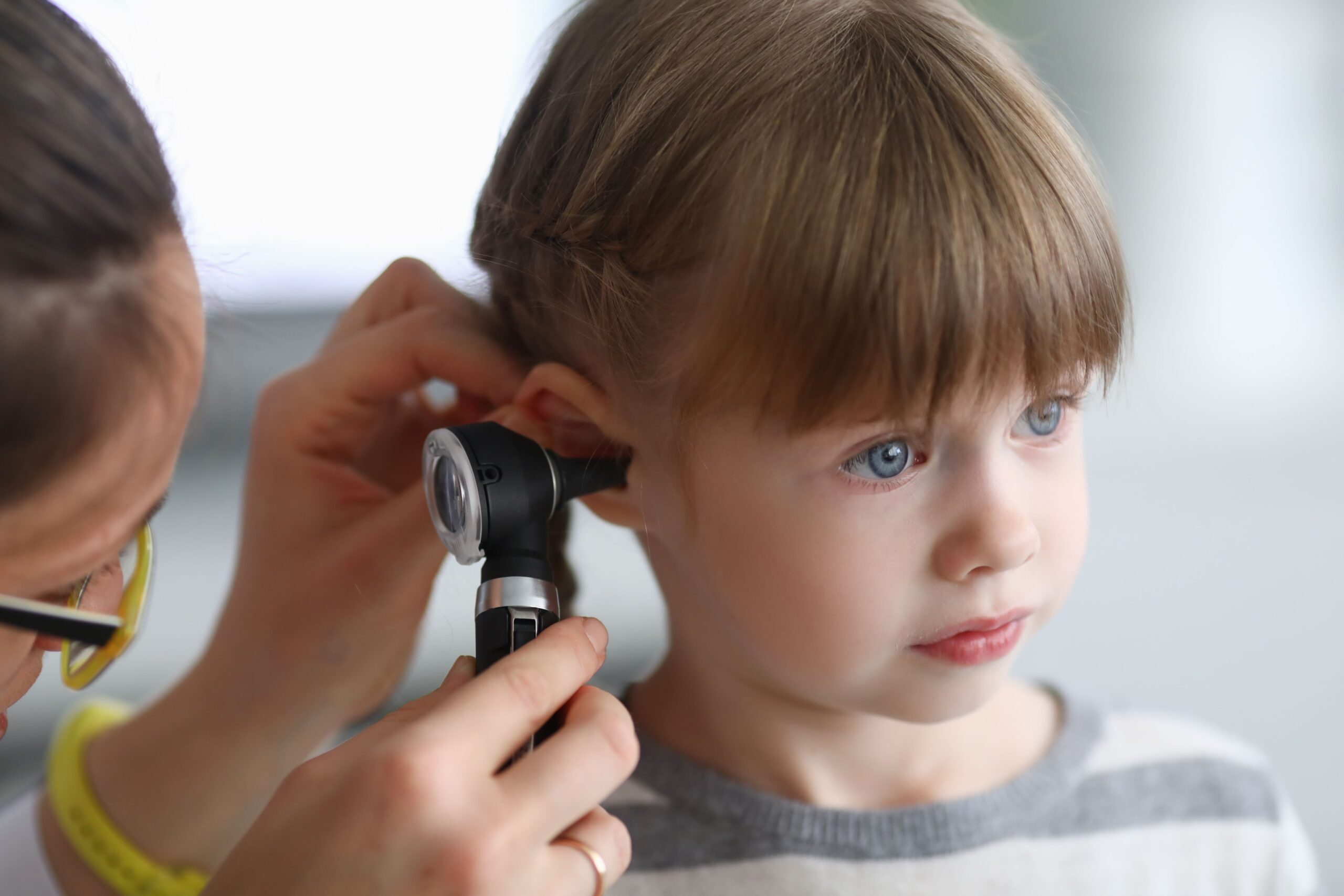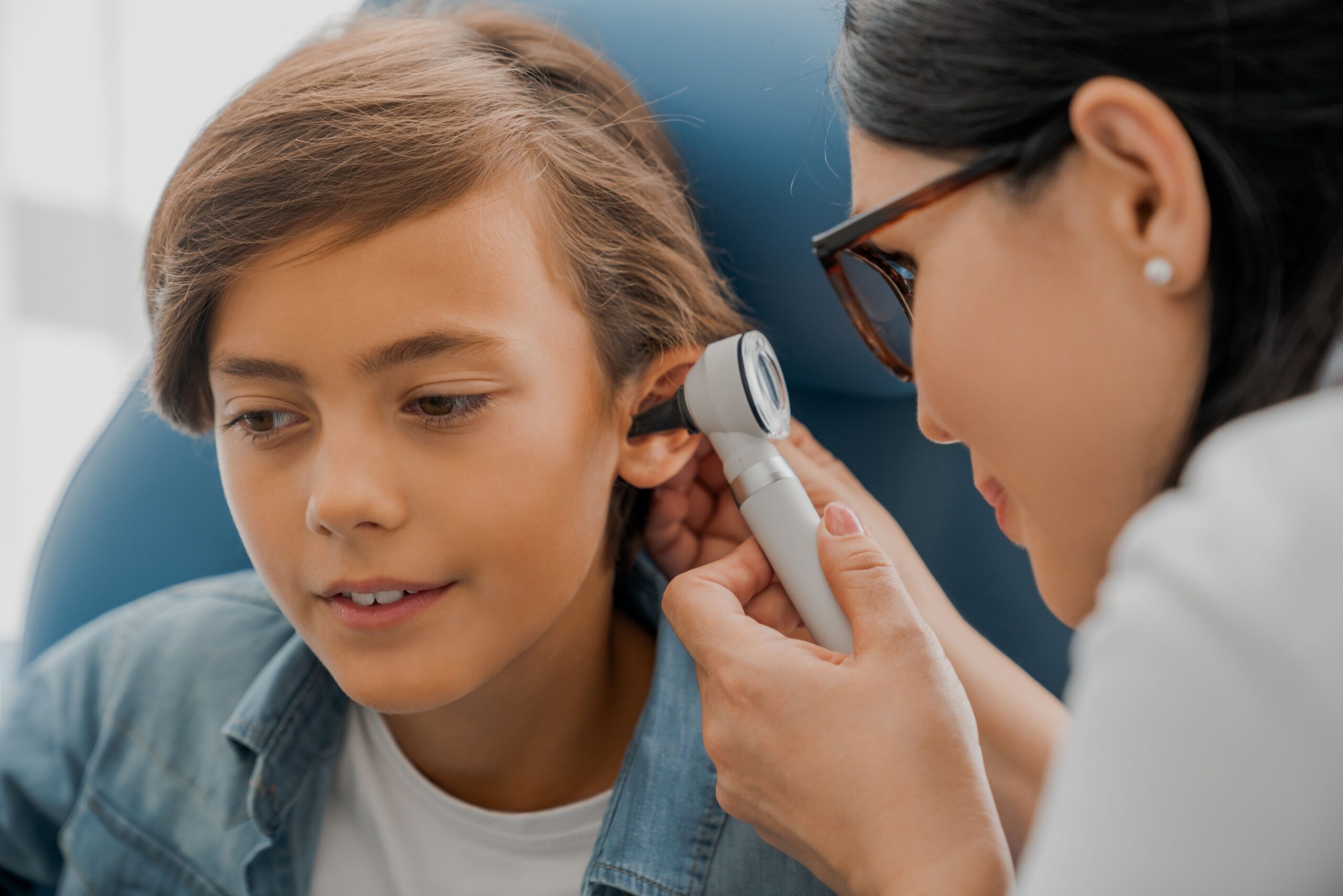Understanding Ear Infection: Effective Treatments and Preventative Tips


Are you struggling with an ear infection? Our comprehensive guide will help you understand symptoms, pinpoint causes, and discover treatments. Whether for you or your child, it clarifies the steps to effectively manage this condition and avoid the common pitfalls and complications associated with ear infections.
Key Takeaways
Ear infections, though commonly affecting children, range from acute to chronic conditions. Bacteria and viruses are the usual culprits, necessitating various treatments based on severity.
Home remedies can alleviate mild ear infection symptoms, but persistent or severe cases require medical attention, possibly involving antibiotics, pain relievers, or ear tubes for chronic occurrences.
Preventing ear infections involves good hygiene, environmental adjustments, and immune system support through diet, exercise, and vaccinations, which are essential for children’s health and development.
Understanding Ear Infections: A Deep Dive

The complexity of ear infections extends far beyond the discomfort they bring. These afflictions, notable for triggering inflammation and a buildup of fluid within the middle ear, constitute an intricate web of factors that predominantly target children—so much so that most will have experienced an infection before their first school bell rings. But what underlies this prevalence in youth, and how should we confront it?
Grasping the nuances of ear infections is vital, as they can range from mere irritations to significant medical issues among youngsters. We can better manage their presence by thoroughly exploring otitis media’s signs, causes, and categories.
From acute otitis media inciting trouble in the middle ear to bouts of otitis externa rippling through the outer ear or complications associated with inner-ear function, it’s our mission to illuminate these often elusive ailments affecting auditory well-being.
Identifying the Symptoms
Experiencing a piercing sensation in your ear or observing increased irritability in your child can indicate an ear infection. The evidence is often unmistakable, with behaviors like ear pulling, disturbances during sleep, and possibly the onset of fever indicating that the body is battling infectious organisms. Likewise, adults may experience discomfort with symptoms, including pain within the ear and discharge, signaling that there’s trouble brewing.
The restlessness or insomnia stems from a simple cause: the turmoil induced by an ear infection can lead to various troubles such as:
difficulty hearing
impaired equilibrium
head pains
diminished hunger
These issues have a pronounced impact on children’s lives but don’t discriminate against adults who may suffer similar flu-like effects. Recognizing these signs promptly isn’t about inviting them into our lives. It’s about acknowledging their presence so we can seek treatment quickly and return to feeling well again.
Causes Behind the Pain
The root of ear pain that transforms even the most peaceful young child into a picture of distress is commonly a bacterial or viral infection. Organisms such as Streptococcus pneumonia and Haemophilus influenza are frequently to blame, proliferating under conditions stimulated by colds or allergies. This environment causes the eustachian tubes to swell and become obstructed, allowing fluid to build up, which can lead to an infection.
On another note, viruses remain unaffected, whereas bacteria may be vanquished using antibiotics. Recognizing this difference is key since it dictates how to treat the condition. If you’re dealing with persistent cold symptoms or discomfort from allergic reactions causing congestion in yourself or your child, remember that these signs might not just indicate a sore throat or nasal discharge. They could also be precursors for an upper respiratory illness, including an ear infection.
Types of Otitis Media

Not every ear infection is the same. Otitis media has diverse conditions, ranging from acute to chronic. Here are various forms of otitis media infections.
Acute otitis media: This type emerges abruptly and is characterized by pain and a brief duration.
Otitis media with effusion: Unlike its acute counterpart, this form silently presents itself with fluid buildup in the middle ear but typically without signs of active infection or accompanying symptoms.
Chronic otitis media with effusion: In this condition, fluid repeatedly accumulates in the middle ear, posing an increased risk for recurrent infections and potential hearing problems.
There’s chronic suppurative otitis media, a severe form that comes with eardrum perforation and an enduring infection requiring direct intervention such as antibiotics or draining fluids from the ear. Whether impacting one or both ears, correctly identifying the specific category of otitis media is crucial for optimal treatment strategies leading to swifter recovery and well-being.
When to Seek Medical Advice
Imagine a situation where your child is suffering from severe ear pain that remains unrelieved by any amount of comforting or lullabies. In such instances, one might consider whether seeking medical attention is necessary. The response would be affirmative, particularly in symptoms like high fever, intense discomfort, or facial paralysis. This isn’t about an excess of caution. Instead, it’s a matter of responding correctly to indications that the body may be fighting an illness.
In cases involving children older than six months with these symptoms, vigilance is usually sufficient unless there’s an escalation in severity indicated by a fever exceeding 102°F or if the intense pain continues unabated. If there is no improvement within 48 to 72 hours or if symptoms persist beyond two to three days without change for the better—consultation with a healthcare professional becomes imperative. Ear infections can present complex challenges, and soliciting expert medical guidance is crucial to ensure your child receives appropriate care and recovers fully.
Home Remedies vs. Professional Care
Ear infections can cause discomfort, but not all ear pain warrants an immediate visit to the doctor. For minor cases, home treatments such as applying a warm compress to the affected ear, ensuring ample rest, and taking over-the-counter analgesics may be remarkably helpful in alleviating symptoms and aiding natural recovery.
When these compassionate self-care strategies fail to alleviate ear infection symptoms after several days, seeking medical attention becomes necessary. In particular, the American Academy of Pediatrics has established clear directives for incorporating antibiotics into treatment regimes for children with sensitive developing auditory systems. It stresses adherence to completing prescribed courses of medication because safeguarding health—especially that of our little ones—is paramount. It is always wiser to err on caution and meticulousness than regret.
Treating Ear Infections Effectively

When an acute ear infection strikes and medical treatment is pursued, what are the effective means of relief? Here’s a rundown:
Antibiotic therapy typically is the initial approach to tackling acute infections in the middle ear when bacteria cause them.
Persistent or recurrent middle ear infections might necessitate a more prolonged course of antibiotics.
In certain situations, it may be advised to have ear tubes inserted.
Alleviating symptoms isn’t limited to antibiotic use. Pain control is equally important. Medicines such as ibuprofen and analgesic eardrops can provide much-needed comfort from pain. Comprehensive care could require tackling underlying issues like nasal congestion with decongestants or allergic reactions with antihistamines and nasal steroids. The ultimate objective is threefold: eradicate the infection, ease any associated discomfort, and restore normalcy for adults and children without interrupting daily activities.
The Role of Antibiotics
Antibiotics act as valiant champions in treating bacterial ear infections, intervening effectively when utilized appropriately. In infants younger than six months, this intervention is immediate. These young ones are given antibiotics immediately to combat the infection. Meanwhile, older children and adults might receive a prescription for antibiotics only if their condition hasn’t improved following an initial observation period lasting between 48 to 72 hours.
The effectiveness of antibiotics hinges on their judicious application. It’s imperative to adhere strictly to the doctor’s instructions and complete every bit of the prescribed antibiotic regimen to defeat the infection while preventing its potential resurgence. This approach ensures recovery and contributes to maintaining public health by reducing opportunities for bacteria to become antibiotic-resistant, which could make subsequent treatment more challenging and elevate overall health hazards.
Non-Antibiotic Relief Options
Ear infections don’t always necessitate the use of antibiotics for relief. Sometimes, heroes in the form of over-the-counter pain relievers emerge. Acetaminophen and ibuprofen can be powerful aids in combatting ear pain, providing protection from discomfort that doesn’t require a prescription’s endorsement. The soothing embrace of a warm compress should not be overlooked—it offers tender relief to an affected ear and assists in alleviating pain.
It’s essential to recognize that some analgesics are inappropriate for certain individuals. For instance, aspirin is a no-go for children due to its association with Reye’s syndrome—a grave illness—so caution is paramount when selecting a medication. Thus, while antibiotics often star in infection treatment plans, these auxiliary options play an invaluable role in managing symptoms and bolstering comfort during recovery periods.
Advanced Interventions
Sometimes, ear infections don’t get better with regular treatments and need more serious solutions. Ear tubes are a good option for kids who keep getting ear infections or whose infections don’t go away with antibiotics.
These tiny tubes help drain fluid from the middle ear, stopping infections and preventing hearing loss. They are put in through a small cut in the eardrum during a surgery called a myringotomy, which also helps air get into the middle ear.
While surgery can seem scary, ear tubes—which usually stay in place for four months to a year and a half—can provide much-needed relief for kids with ongoing ear infections.
Preventing Future Ear Infections

Dealing with an ear infection can be quite tumultuous, and it’s natural to want to avoid going through that ordeal again. Thankfully, there are preventative measures one can employ to mitigate the likelihood of subsequent outbreaks. Regular handwashing is a cornerstone practice for warding off germs responsible for infections. When bottle-feeding children, doing so while seated upright can play a crucial role in averting future ear infections.
Preventive strategies extend beyond basic cleanliness and infant feeding positions. They encompass modifications in lifestyle choices and immune system fortification as well. Adopting a nutrient-dense diet paired with regular exercise strengthens bodily defenses against potential invaders such as those causing ear infections. Immunizations also serve as powerful tools against these afflictions by significantly decreasing their chances of occurrence and keeping our immune responses primed against microbial threats we may encounter—thereby offering robust protection from ear infections.
Environmental Factors
Consider that the air we inhale might lay the groundwork for an ear infection. Indeed, external elements like pollen levels, atmospheric contaminants, and brisk temperatures can contribute to a heightened risk of developing ear infections. Such irritants instigate swelling within the eustachian tubes, creating an ideal environment for infection-causing organisms to thrive.
In particular, exposure to cigarette smoke and airborne pollutants, including particulate substances and nitrogen dioxide, has escalated ear infections by impairing immune defenses, thus opening avenues for invasive bacteria and viruses. It’s crucial not to discount how much cold and moist conditions tend to cheer on these microscopic invaders, fostering their proliferation, which could increase the chances of contracting an infection.
Boosting Immunity
The immune system plays a pivotal role in warding off ear infections, and enhancing its performance may be as effortless as capitalizing on breastfeeding’s advantages. With antibodies and immunological components, breast milk does more than feed infants—it also acts as a protective agent. Evidence suggests that breastfed children have a markedly reduced susceptibility to ear infections for at least one year.
In addition to the benefits of breastfeeding, adopting a nutritious diet and regular physical activity can strengthen immune defenses against ear infections. It’s about building robust health foundations so our bodies remain resilient—ensuring that our immune systems are prepared to respond effectively and prevent ear infections from dominating our well-being when pathogens approach.
Special Considerations for Children

Children tend to take center stage regarding ear infections, and the reason goes beyond their knack for swapping germs on the playground. In truth, most ear infections strike children due primarily to anatomical factors. They have eustachian tubes that are narrower and more level than those in adults. This unfortunate alignment means fluids don’t drain as effectively from their ears, creating an ideal environment for infection. Since their immune defenses are still developing proficiency at this young age, battling against the bacteria or viruses responsible for ear infections is a tougher fight.
For infants under six months old diagnosed with an ear infection, antibiotics tend not just to be common but often deemed necessary immediately, underscoring how critical medical treatment is for them. As these youngsters grow up, though, certain habits might need altering—like weaning off pacifiers past one year, which could lessen their likelihood of enduring episodes of ear infections—such changes can contribute significantly to maximizing fun times over sick days.
Monitoring Fluid in the Middle Ear
It’s crucial to monitor the state of your child’s ears because the middle ear, a tiny cavity behind the eardrum, can accumulate fluid, which may obscure sound transmission. This could lead to temporary auditory impairments and consequently hinder speech and language development in children. Consistent examinations by a pediatrician are indispensable. With an otoscope, they inspect behind the eardrum for any persistent fluid that might impede your child’s ability to perceive sounds from their environment.
Prompt intervention is essential for maintaining healthy hearing function in young ones. Pediatricians act as detectives, looking for signs of non-symptomatic fluid retention within the middle ear space. Identifying these conditions swiftly allows us to take necessary measures against potential developmental setbacks in children’s speech and language capabilities, thus safeguarding the unchecked advancement of their communicative abilities.
Hearing and Language Assessment
As any good director knows, a single missed cue can throw off an entire performance. The same goes for a child’s hearing and language development when faced with ear infections. Audiological assessments are the sound checks that ensure everything is in tune. These tests, including tympanometry to measure eardrum movement and hearing tests, are crucial for detecting the effects of middle ear fluid on a child’s hearing, which can ripple out to affect their speech development.
It’s not just a one-time show; monitoring for ear infections and their impact involves regular hearing and language screenings, especially for children who are frequent visitors to the world of otitis media or those with persistent fluid in the middle ear. By keeping tabs on these aspects, we can ensure that children’s communication abilities develop on cue, without any unwelcome interruptions from ear infections.
Costs of Ear Infection Treatment
Shining a light on a frequently muted discussion is the expense of managing ear infections. In the U.S., direct costs associated with acute otitis media strike an alarming high, reaching approximately $2.88 billion annually, impacting both individual wallets and the healthcare system. The financial journey through otitis media treatment can be as overwhelming as its physical discomforts, compounded by varying expenses influenced by insurance specifics and generic medication accessibility.
Amidst these fiscal storm clouds lies a glint of relief. Enter NiHowdy’s industry-leading prescription discount card, which is gaining applause for easing these monetary strains. Through NiHowdy’s program, individuals benefit from reduced prescription prices and stand to gain an extra perk: earning up to 3% back in Bitcoin with every purchase of prescribed drugs. This innovative combination offers both immediate savings and futuristic investment possibilities, thereby lessening the economic burden carried by those dealing with ear infections.
Prescription Savings with NiHowdy
Every performance is crucial in healthcare, and NiHowdy’s prescription discount card is a major player in reducing medication costs. Patients can prioritize their well-being without financial constraints overshadowing it thanks to this tool that slashes drug prices. Elevating its role beyond cost savings, NiHowdy rewards users with Bitcoin cashback, positioning itself as an avant-garde partner in fiscal health.
Imagine mitigating expenses incurred from treating ear infections by employing a discount card that provides immediate pharmacy savings and a bonus of cryptocurrency earnings. It’s akin to receiving a reimbursement on your wellness expenditures. With the unpredictable nature of digital currency markets, such Bitcoin incentives can provide immediate relief and amplify future economic prosperity based on today’s health-related outlays.
Maximizing Healthcare Budgets
In a perfect scenario, financial worry wouldn’t accompany healthcare services. Yet, for many, the cost of managing health care is an unavoidable aspect of life. Smartly incorporating Bitcoin incentives from initiatives like NiHowdy’s discount card into one’s budgeting routine can be shrewd. The prospect that Bitcoin might increase in value offers hope: today’s medical costs may yield future economic gains.
Patients who make tactical use of NiHowdy’s prescription discount program can accomplish several objectives.
They reduce their immediate expenses
They create reserves for impending costs
They transform obligatory spending into prospective investments
Their journey through healthcare financing concludes more optimistically
They also accumulate cryptocurrency rewards that enhance long-term fiscal stability.
This method represents a cutting-edge blend of managing health expenditures and embracing technological advances in finance.
Summary
As the curtain falls on our exploration of ear infections, we’ve traversed the landscape of symptoms, causes, and treatments and discovered strategies for prevention. We’ve seen how the ear’s anatomy, especially in children, sets the stage for these common yet complex infections. We learned that timely interventions and smart health decisions can prevent an encore.
Above all, we’ve highlighted that the journey through ear infections doesn’t have to be a solo performance. With the support of healthcare providers, preventive measures, and financial health tools like NiHowdy’s prescription discount card, managing ear infections can be a well-orchestrated ensemble. So whether you’re facing the acute onset of an ear infection or seeking ways to prevent future episodes, remember that knowledge, proactive care, and economic savvy are the keys to keeping your health in harmony.
Frequently Asked Questions
What are the most common symptoms of an ear infection in children?
Ear infections in children often manifest through several vital signs, such as discomfort within the ear, difficulties with sleep, increased irritability, a raised temperature, and discharge from the ear.
Vigilance for these symptoms is crucial. If there is suspicion of an ear infection, professional medical help should be sought.
How can I tell if bacteria or a virus causes an ear infection?
It’s impossible to determine the cause solely based on symptoms. Bacterial ear infections might necessitate antibiotic treatment if symptoms do not improve within 48 to 72 hours. On the other hand, viral ear infections require management of the symptoms.
Are there different types of ear infections?
There are different types of ear infections, such as acute otitis media, otitis media with effusion, and chronic otitis media with effusion, each with distinct symptoms and treatments. It’s important to identify the specific type for proper care.
When should I use NiHowdy’s prescription discount card for ear infections?
If you aim to reduce healthcare expenses, consider utilizing NiHowdy’s prescription discount card when purchasing ear infection medications prescribed by your healthcare provider. This will grant you discounts and enable you to earn Bitcoin cashback.
Can ear infections be prevented?
Indeed, consistently washing your hands, avoiding allergens and pollutants, choosing to breastfeed when possible, adhering to a nutritious diet and regular physical activity regimen, and keeping immunizations current can help prevent ear infections.


